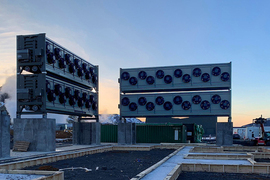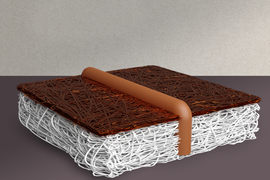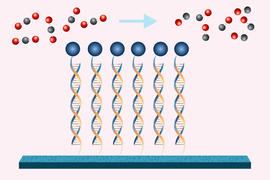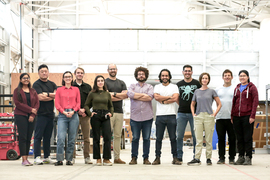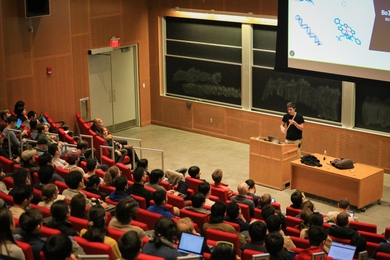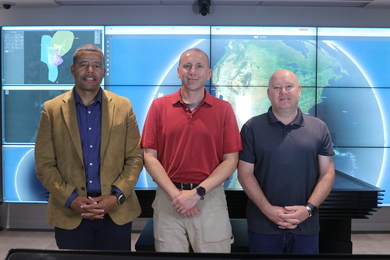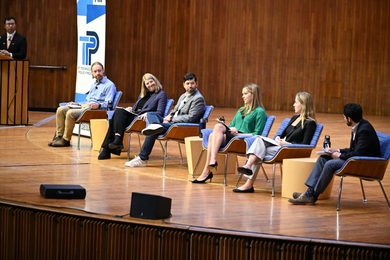Human activities continue to pump billions of tons of carbon dioxide into the atmosphere each year, raising global temperatures and driving extreme weather events. As countries grapple with climate impacts and ways to significantly reduce carbon emissions, there have been various efforts to advance carbon dioxide removal (CDR) technologies that directly remove carbon dioxide from the air and sequester it for long periods of time.
Unlike carbon capture and storage technologies, which are designed to remove carbon dioxide at point sources such as fossil-fuel plants, CDR aims to remove carbon dioxide molecules that are already circulating in the atmosphere.
A new report by the American Physical Society and led by an MIT physicist provides an overview of the major experimental CDR approaches and determines their fundamental physical limits. The report focuses on methods that have the biggest potential for removing carbon dioxide, at the scale of gigatons per year, which is the magnitude that would be required to have a climate-stabilizing impact.
The new report was commissioned by the American Physical Society's Panel on Public Affairs, and appeared last week in the journal PRX. The report was chaired by MIT professor of physics Washington Taylor, who spoke with MIT News about CDR’s physical limitations and why it’s worth pursuing in tandem with global efforts to reduce carbon emissions.
Q: What motivated you to look at carbon dioxide removal systems from a physical science perspective?
A: The number one thing driving climate change is the fact that we’re taking carbon that has been stuck in the ground for 100 million years, and putting it in the atmosphere, and that’s causing warming. In the last few years there’s been a lot of interest both by the government and private entities in finding technologies to directly remove the CO2 from the air.
How to manage atmospheric carbon is the critical question in dealing with our impact on Earth’s climate. So, it’s very important for us to understand whether we can affect the carbon levels not just by changing our emissions profile but also by directly taking carbon out of the atmosphere. Physics has a lot to say about this because the possibilities are very strongly constrained by thermodynamics, mass issues, and things like that.
Q: What carbon dioxide removal methods did you evaluate?
A: They’re all at an early stage. It's kind of the Wild West out there in terms of the different ways in which companies are proposing to remove carbon from the atmosphere. In this report, we break down CDR processes into two classes: cyclic and once-through.
Imagine we are in a boat that has a hole in the hull and is rapidly taking on water. Of course, we want to plug the hole as quickly as we can. But even once we have fixed the hole, we need to get the water out so we aren't in danger of sinking or getting swamped. And this is particularly urgent if we haven't completely fixed the hole so we still have a slow leak. Now, imagine we have a couple of options for how to get the water out so we don’t sink.
The first is a sponge that we can use to absorb water, that we can then squeeze out and reuse. That’s a cyclic process in the sense that we have some material that we’re using over and over. There are cyclic CDR processes like chemical “direct air capture” (DAC), which acts basically like a sponge. You set up a big system with fans that blow air past some material that captures carbon dioxide. When the material is saturated, you close off the system and then use energy to essentially squeeze out the carbon and store it in a deep repository. Then you can reuse the material, in a cyclic process.
The second class of approaches is what we call “once-through.” In the boat analogy, it would be as if you try to fix the leak using cartons of paper towels. You let them saturate and then throw them overboard, and you use each roll once.
There are once-through CDR approaches, like enhanced rock weathering, that are designed to accelerate a natural process, by which certain rocks, when exposed to air, will absorb carbon from the atmosphere. Worldwide, this natural rock weathering is estimated to remove about 1 gigaton of carbon each year. “Enhanced rock weathering” is a CDR approach where you would dig up a lot of this rock, grind it up really small, to less than the width of a human hair, to get the process to happen much faster. The idea is, you dig up something, spread it out, and absorb CO2 in one go.
The key difference between these two processes is that the cyclic process is subject to the second law of thermodynamics and there’s an energy constraint. You can set an actual limit from physics, saying any cyclic process is going to take a certain amount of energy, and that cannot be avoided. For example, we find that for cyclic direct-air-capture (DAC) plants, based on second law limits, the absolute minimum amount of energy you would need to capture a gigaton of carbon is comparable to the total yearly electric energy consumption of the state of Virginia. Systems currently under development use at least three to 10 times this much energy on a per ton basis (and capture tens of thousands, not billions, of tons). Such systems also need to move a lot of air; the air that would need to pass through a DAC system to capture a gigaton of CO2 is comparable to the amount of air that passes through all the air cooling systems on the planet.
On the other hand, if you have a once-through process, you could in some respects avoid the energy constraint, but now you’ve got a materials constraint due to the central laws of chemistry. For once-through processes like enhanced rock weathering, that means that if you want to capture a gigaton of CO2, roughly speaking, you’re going to need a billion tons of rock.
So, to capture gigatons of carbon through engineered methods requires tremendous amounts of physical material, air movement, and energy. On the other hand, everything we’re doing to put that CO2 in the atmosphere is extensive too, so large-scale emissions reductions face comparable challenges.
Q: What does the report conclude, in terms of whether and how to remove carbon dioxide from the atmosphere?
A: Our initial prejudice was, CDR is just going to take so much energy, and there’s no way around that because of the second law of thermodynamics, regardless of the method.
But as we discussed, there is this nuance about cyclic versus once-through systems. And there are two points of view that we ended up threading a needle between. One is the view that CDR is a silver bullet, and we’ll just do CDR and not worry about emissions — we’ll just suck it all out of the atmosphere. And that’s not the case. It will be really expensive, and will take a lot of energy and materials to do large-scale CDR. But there’s another view, where people say, don’t even think about CDR. Even thinking about CDR will compromise our efforts toward emissions reductions. The report comes down somewhere in the middle, saying that CDR is not a magic bullet, but also not a no-go.
If we are serious about managing climate change, we will likely want substantial CDR in addition to aggressive emissions reductions. The report concludes that research and development on CDR methods should be selectively and prudently pursued despite the expected cost and energy and material requirements.
At a policy level, the main message is that we need an economic and policy framework that incentivizes emissions reductions and CDR in a common framework; this would naturally allow the market to optimize climate solutions. Since in many cases it is much easier and cheaper to cut emissions than it will likely ever be to remove atmospheric carbon, clearly understanding the challenges of CDR should help motivate rapid emissions reductions.
For me, I’m optimistic in the sense that scientifically we understand what it will take to reduce emissions and to use CDR to bring CO2 levels down to a slightly lower level. Now, it’s really a societal and economic problem. I think humanity has the potential to solve these problems. I hope that we can find common ground so that we can take actions as a society that will benefit both humanity and the broader ecosystems on the planet, before we end up having bigger problems than we already have.

